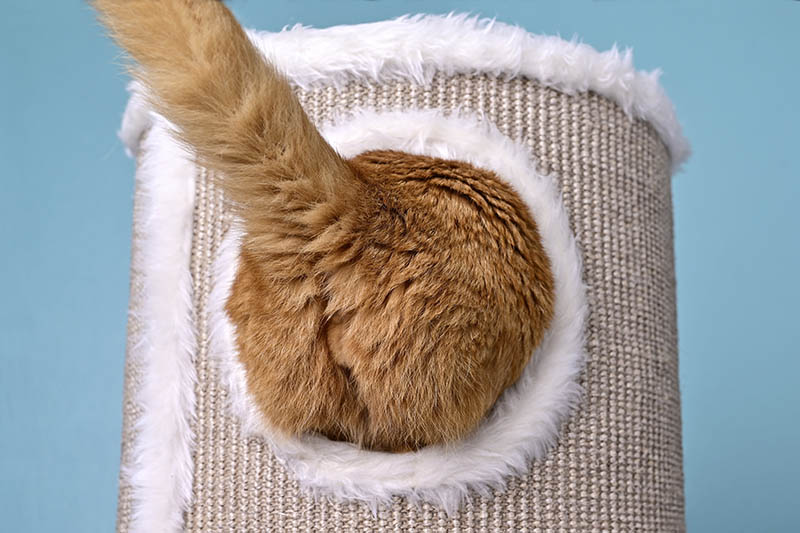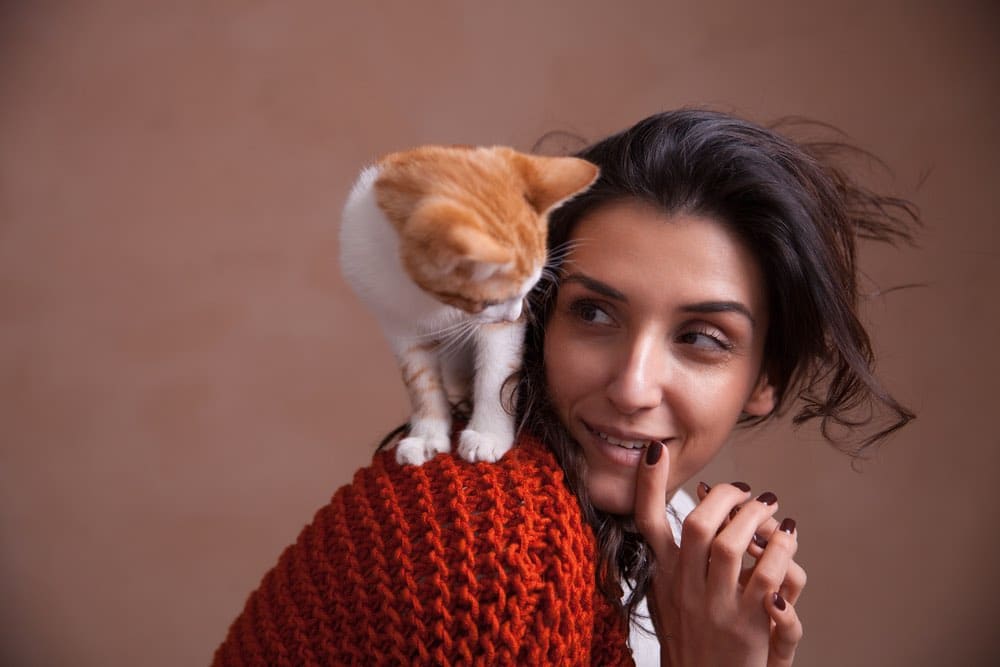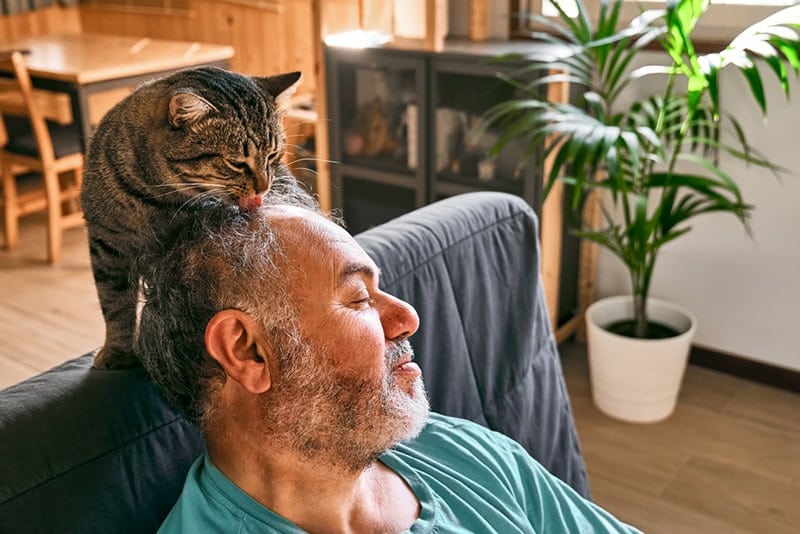Cats are curious creatures which have many behaviors that we must study to know, as they usually are not natural human ones. One such behavior is something called cat bunting. In brief, cat bunting is when a cat places or butts their head on a human, object, or other animal. They often finish the behavior by rubbing their brow and cheeks on the bunting subject.
So, what exactly is cat bunting, and why do cats take part in such behavior? These are great questions that we aim to reply for you here. Read on!

What Exactly Is Cat Bunting?
Cat bunting is a typical motion amongst all cat breeds. You already know when your cat is “bunting” in the event that they press their brow against your body (normally your individual head) after which rigorously rub their brow and cheeks against you. Cats are also known to bunt other cats and dogs of their household in addition to things like furniture and partitions. There are just a few different reasons for this behavior, all of which have every little thing to do with nature and instincts.
Now for a bit of anatomy lesson. Cats have scent glands on various parts of their body, including the highest of their head, cheeks, lips, and tail. These scent glands secrete pheromones that are natural messengers to other cats and animals. Pheromones could be used to create a relaxing sensation, convey identification information, and claim territory or individuals. These scent glands are certainly one of the principal components behind cat bunting.
 Image Credit: Lightspruch, Shutterstock
Image Credit: Lightspruch, Shutterstock

Reasons Why Cats Practice Head Bunting
There are multiple reasons that cats “bunt” their heads and rub their cheeks against people, animals, and objects. None of them are harmful or aggressive. As an alternative, the explanations are interesting and even endearing.
1. Bonding
Cats will engage in bunting behavior to bond with their companions. That is more so a behavior that is meant to let that you could have been accepted as a part of your cat’s group or “feline family.” It’s bonding in a way but it surely goes further than that. Once you could have turn into a part of the trusted family, you could have a responsibility to take part in the varied behaviors which are natural within the feline kingdom—or a minimum of, your cat thinks that you simply do!
 Image credit: lenina11only, Shutterstock
Image credit: lenina11only, Shutterstock
2. Social Rating
Cats are inclined to bunt those of their group as a way of making a social hierarchy. The dominant cat of the group will bunt the opposite cats to spread their pheromones to the entire group. This helps create a gaggle scent, so another animals around know that every one the cats within the group belong, work, and protect together. Bunting also makes sure all of the cats within the group know who the “boss” is. Other cats within the group may bunt one another to assist create a functional social rating that helps keep the peace and stave off serious confrontations.
3. Marking Behavior
Another excuse that a cat might engage in bunting is to mark territory. They typically do that to things like furniture and clothing. They’re attempting to be certain other animals know that they’ve been there and are indicating to cats and humans of their group that the world is secure. It’s not a lot to territorially mark objects, but it surely’s more like abandoning “news” that the cat doing the bunting has been there. It’s a way of spreading their pheromones and ensuring others catch wind of said pheromones every time they get close.
 Image Credit: Caterina Trimarchi, Shutterstock
Image Credit: Caterina Trimarchi, Shutterstock
4. Scent Sharing
Cats will bunt their human and animal companions to share their scent. They hope that their scent will probably be spread and shared with other beings in the encompassing area. It helps create a way of community and balance for all group members involved and helps stave off other groups that could possibly be attempting to encroach on their territory. Scent sharing is common in households with multiple cats living in them and communal places like boarding centers and humane societies.

How Should You Reply to Your Cat’s Head Bunting?
You’ll be able to reply to your cat’s head bunting in various ways, but you need to never accomplish that negatively. You might gently “bunt” your kitty back, give them just a few pets, or pick them up and cuddle with them. Possibly playing a game is the response that your kitty is searching for. Whatever your chosen response, concentrate to how your kitty responds in return.
When you work out what responses your cat likes the perfect, you possibly can respond in those ways every time bunting comes into play. All the time concentrate to how other animals react to a cat’s bunting, especially when dogs are the topic of such behavior. If aggression is the response, it’s important to take steps to coach the animals in the best way to interact with one another or separate the animals if obligatory, especially after they usually are not being supervised.
Conclusion
Cat bunting is just not normally a harmful or aggressive behavior. In case your cat bunts you, likelihood is that they’re just letting that you simply are accepted as an element of their group, or they try to speak with you. Whatever the explanation on your cat’s bunting behavior, there ought to be no reason to fret unless it causes problems with other animals in your own home.
Featured Image Credit: Sari ONeal, Shutterstock

